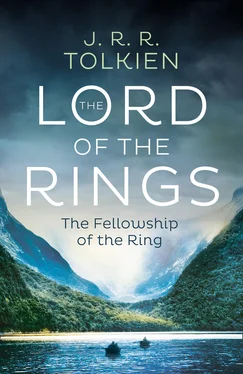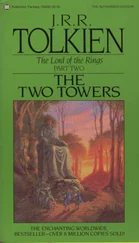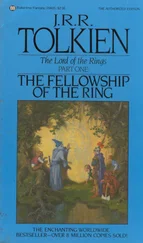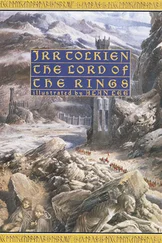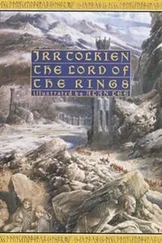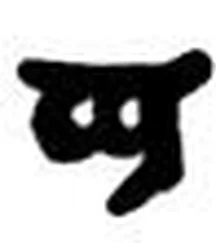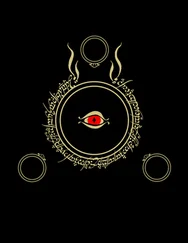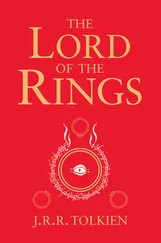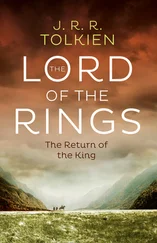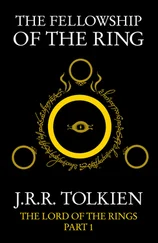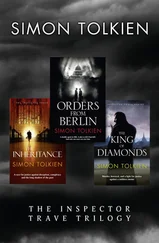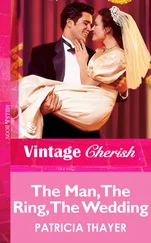Efforts such as these follow the example of the author of The Lord of the Rings during his lifetime. His concern for the textual accuracy and coherence of his work is evident from the many emendations he made in later printings, and from notes he made for other emendations which for one reason or another have not previously (or have only partly) been put into effect. Even late in life, when such labours wearied him, his feelings were clear. On 30 October 1967 he wrote to Joy Hill at George Allen & Unwin, concerning a reader’s query he had received about points in the Appendices to The Lord of the Rings : ‘Personally I have ceased to bother about these minor “discrepancies”, since if the genealogies and calendars etc. lack verisimilitude it is in their general excessive accuracy: as compared with real annals or genealogies! Anyway the slips were few, have now mostly been removed, and the discovery of what remain seems an amusing pastime! But errors in the text are another matter ’ (italics ours). In fact Tolkien had not ‘ceased to bother’, and ‘slips’ were dealt with as opportunities arose. These, and the indulgence of his publisher, allowed Tolkien a luxury few authors enjoy: multiple chances not only to correct his text but to improve it, and to further develop the languages, geography, and peoples of Middle-earth.
The fiftieth anniversary of The Lord of the Rings seemed an ideal opportunity to consider the latest (2002) text in light of information we had gathered in the course of decades of work in Tolkien studies, with Steve Frisby’s research at hand, and with an electronic copy of The Lord of the Rings (supplied by HarperCollins) searchable by keyword or phrase. The latter especially allowed us to develop lists of words that varied from one instance to another, and investigate variations in usage, as they stood in the copy-text and relative to earlier editions and printings. Of course Tolkien wrote The Lord of the Rings over so long a period of time, some eighteen years, that inconsistencies in its text were almost inevitable. Christopher Tolkien even observed to us that some apparent inconsistencies of form in his father’s work may even have been deliberate: for instance, although Tolkien carefully distinguished house ‘dwelling’ from House ‘noble family or dynasty’, in two instances he used house in the latter sense but in lower case, perhaps because a capital letter would have detracted from the importance of the adjective with which the word was paired (‘royal house’, ‘golden house’). There can be no doubt, however, that Tolkien attempted to correct inconsistency, no less than outright error, whenever it came to his attention, and it was our opinion, with the advice and agreement of Christopher Tolkien, that an attempt should be made to do so in the anniversary edition, in so far as we could carefully and conservatively distinguish what to emend.
Many of the emendations in the present text are to marks of punctuation, either to correct recent typographical errors or to repair surviving alterations introduced in the second printing of The Fellowship of the Ring . In the latter respect and in every case, Tolkien’s original punctuation is always more felicitous – subtle points, when one is comparing commas and semi-colons, but no less a part of the author’s intended expression. Distinctive words such as chill rather than cold , and glistered rather than glistened , changed by typesetters long ago without authorization, likewise have been restored. A controlled amount of regularization also seemed called for, such as naught rather than nought , a change instituted by Tolkien but not carried through in all instances; Dark Power rather than dark power when the reference is obviously to Sauron (or Morgoth); Barrow-downs by Tolkien’s preference rather than Barrowdowns ; likewise Bree-hill rather than Bree Hill ; accented and more common Drúadan rather than Druadan ; capitalized names of seasons when used as personification or metaphor, according to Tolkien’s predominant practice and the internal logic of the text; and Elvish rather than elvish when used as a separate adjective, following a preference Tolkien marked in his copy of the second edition of The Lord of the Rings . In addition, we have added a second accent to Númenórean(s) , as Tolkien often wrote the name in manuscript and as it appears in The Silmarillion and other posthumous publications.
The result, nonetheless, still includes many variations in capitalization, punctuation, and other points of style. Not all of these are erroneous: they include words such as Sun , Moon , Hobbit , and Man (or sun , moon , hobbit , man ), which may change form according to meaning or application, in relation to adjacent adjectives, or whether Tolkien intended personification, poetry, or emphasis. His intent cannot be divined with confidence in every case. But it is possible to discern Tolkien’s preferences in many instances, from statements he wrote in his check copies of The Lord of the Rings or from a close analysis of its text in manuscript, typescript, proof, and print. Whenever there has been any doubt whatsoever as to the author’s intentions, the text has been allowed to stand.
Most of the demonstrable errors noted by Christopher Tolkien in The History of Middle-earth also have been corrected, such as the distance from the Brandywine Bridge to the Ferry ( ten miles rather than twenty ) and the number of Merry’s ponies ( five rather than six ), shadows of earlier drafts. But those inconsistencies of content, such as Gimli’s famous (and erroneous) statement in Book III, Chapter 7, ‘Till now I have hewn naught but wood since I left Moria’, which would require rewriting to emend rather than simple correction, remain unchanged.
So many new emendations to The Lord of the Rings , and such an extensive review of its text, deserve to be fully documented. Although most readers will be content with the text alone, many will want to know more about the problems encountered in preparing this new edition, and their solutions (where solutions have been possible), especially where the text has been emended, but also where it has not. To this end, and to illuminate the work in other respects, we are preparing a volume of annotations to The Lord of the Rings for publication in 2005. This will allow us to discuss, at a length impossible in a prefatory note, the various textual cruces of The Lord of the Rings , to identify changes that have been made to the present text, and to remark on significant alterations to the published work throughout its history. We will also explain archaic or unusual words and names in The Lord of the Rings , explore literary and historical influences, note connections with Tolkien’s other writings, and comment on differences between its drafts and published form, on questions of language, and on much else that we hope will interest readers and enhance their enjoyment of Tolkien’s masterpiece.
Wayne G. Hammond & Christina Scull
May 2004
FOREWORD TO THE SECOND EDITION
This tale grew in the telling, until it became a history of the Great War of the Ring and included many glimpses of the yet more ancient history that preceded it. It was begun soon after The Hobbit was written and before its publication in 1937; but I did not go on with this sequel, for I wished first to complete and set in order the mythology and legends of the Elder Days, which had then been taking shape for some years. I desired to do this for my own satisfaction, and I had little hope that other people would be interested in this work, especially since it was primarily linguistic in inspiration and was begun in order to provide the necessary background of ‘history’ for Elvish tongues.
Читать дальше
